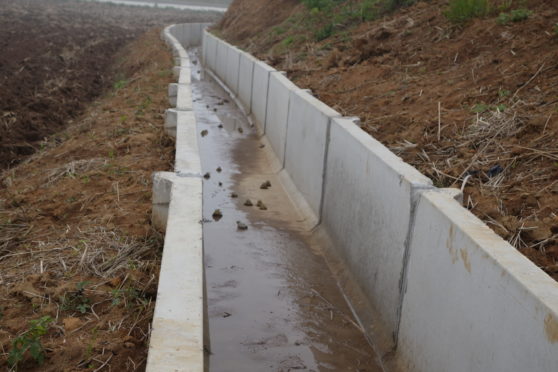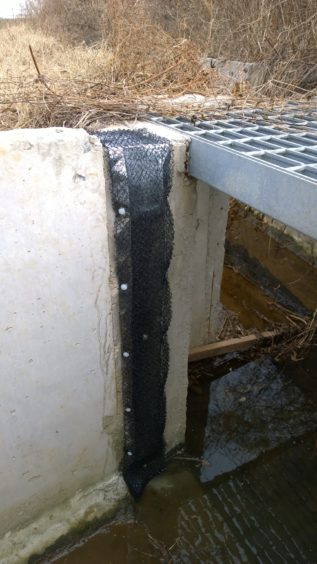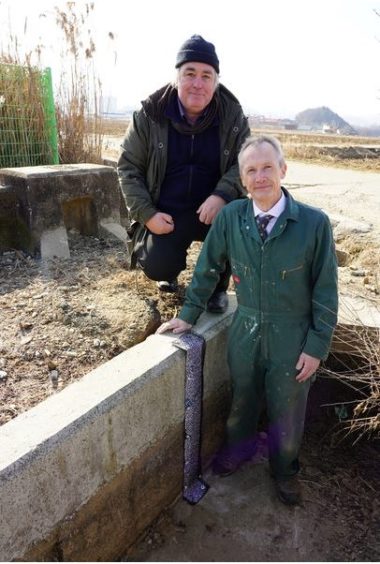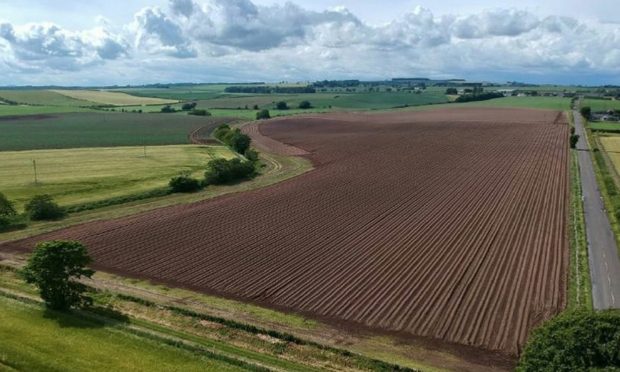Lifesaving ladders designed in Angus to save amphibians and reptiles have gone global.
The Republic of Korea is trialling the technology in concrete rice field trenches to save its dwindling frog population.
The amphibian ladder journey started at Silver Birch Drive in Dundee in 2014 before being rolled out across four other sites in Angus.
The ladders are made of steel sheet, cut to length to suit each drain and then bent to form a gradually-reducing incline, which levels out underneath the cover.
The steel is then covered in jute, which can provide frogs, toads and newts with a climbing frame, allowing them to reach the underside of the drain cover and then hop through the grating to freedom.
Trevor Rose of Friends of Angus Herpetofauna (FAH) said: “We were amazed to be contacted by Birds Korea and to discover that they had a very serious problem with amphibian entrapment.
“Even though we were thousands of miles away, the pictures of hundreds of frogs trapped in concrete rice field trenches was heart-wrenching.
“We had to do something and provide any help we could.”
In recent years thousands of kilometres of concrete trenches have been appearing all over Korea in an effort to improve drainage and irrigation of paddy fields.
Mr Rose said the trenches are impassable to amphibians and there is no safe passage “from terrestrial foraging and hibernation sites to breeding grounds without encountering these death traps”.
The problem has since been realised as some of the concrete sections in certain areas have been replaced with a design which includes an in-built ‘staircase’.
However, it costs thousands of dollars per section to carry out the modification, which many authorities cannot afford.
Dr Nial Moores, director of Birds Korea, came across the Angus amphibian ladder on the internet after first recognising the problem in 2016.
He invited Mr Rose to Korea to provide first-hand advice and guidance and demonstrate how the ladders could be adapted to alleviate the problem.
“Our short time in Korea was well spent visiting three sites and meeting officials at various seminars,” said Mr Rose.
“But by far the most satisfying work was demonstrating ladder making and actually fitting nine ladders in rice field trenches and gully pots.
“The sample ladders will be replicated and monitored when amphibians return in the spring.
“We have no doubt that they can only do good but we have to wait for the results.”
He said that losing so many frog populations will have a devastating effect on biodiversity and the food chain will be compromised.
Mr Rose said: “It’s amazing to think that our journey that began in Silver Birch Drive six years ago has taken us nearly halfway around the world and is now helping frogs in far flung places.
“What a fantastic legacy for Angus that thousands of frogs in Korea are now benefiting from that original research.
“It is no exaggeration to say that an entire ecosystem can be revived for the benefit of wildlife and the people that live there.”













